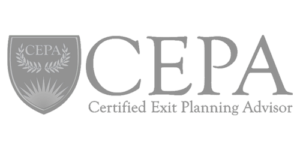Proper cash flow management is crucial for the long-term financial success of any business, especially those facing decline. According to a study by Intuit, 61 percent of small businesses worldwide struggle with cash flow, and many are unable to pay vendors, loans, and employees due to cash flow issues. To revitalize declining businesses and secure financial stability, implementing effective cash flow management strategies is essential.
Key Takeaways:
- Cash flow management is crucial for business success, particularly during periods of decline.
- Many small businesses struggle with cash flow, resulting in difficulties paying creditors and employees.
- Implementing effective cash flow management strategies is vital to revitalize declining businesses and achieve financial stability.
- Monitoring cash flow is the first step to understanding and managing business cash flow.
- Strategies for improving cash flow include adjusting inventory levels, leasing equipment, borrowing money before needed, and streamlining processes through technology.
The Importance of Monitoring Cash Flow
Managing business cash flow is essential for the financial health and stability of any company. One of the crucial steps in effective cash flow management is monitoring cash flow. By keeping a close eye on the money coming in and going out of the business, owners and managers can gain a clear understanding of their cash flow situation.
Consistently monitoring cash flow allows businesses to identify potential issues and take proactive measures to address them. It provides valuable insights into the company's financial standing and highlights areas that need attention. Cash flow analysis helps identify patterns and trends, enabling businesses to make informed decisions for financial growth and stability.
Monitoring cash flow involves various activities and strategies. One important aspect is sending invoices promptly and ensuring timely payment from customers. This helps maintain a steady inflow of cash and reduces the risk of late or non-payment. Adjusting inventory levels based on demand and market trends is another way to manage cash flow effectively. By optimizing inventory, businesses can minimize holding costs and maximize sales revenue.
Leasing equipment instead of purchasing is a smart cash flow management strategy. Leasing allows businesses to conserve cash and avoid significant upfront expenses, especially for rapidly depreciating assets. Furthermore, borrowing money before it's needed can provide a safety net during challenging times and help avoid disruption in operations.
In conclusion, monitoring cash flow is a critical component of managing business cash flow effectively. By closely tracking the money flowing in and out of the company, businesses can identify potential issues and take proactive measures to ensure financial stability and growth. Cash flow analysis enables informed decision-making and helps businesses optimize their operations for improved cash flow management.
Strategies for Improving Cash Flow
When it comes to improving cash flow, businesses can implement various strategies that can make a significant impact on their financial stability and success. By optimizing the flow of cash within the company, businesses can ensure that they have enough funds to meet their obligations and invest in growth opportunities.
Adjust Inventory Levels
One effective strategy is to regularly assess and adjust inventory levels. By identifying products that are not selling well and taking steps to sell them off, businesses can free up valuable capital that can be reinvested elsewhere. This can help prevent excess inventory costs and optimize cash flow.
Lease Equipment Instead of Buying
Another tactic for managing short-term financial burdens is to consider leasing equipment instead of buying it outright. Leasing allows businesses to access the necessary tools and resources without tying up a large amount of capital upfront. This can provide more flexibility and liquidity, improving cash flow in the process.
Borrow Money Before You Need It
Creating a safety net for difficult times is essential for cash flow optimization. Businesses can benefit from borrowing money before they actually need it, whether through a line of credit or other financing options. Having access to additional funds can help navigate unexpected cash flow gaps and maintain financial stability.
Restructure Payments and Collections
Another tactic to optimize cash flow is to restructure payments and collections. Offering incentives for early payment or implementing stricter collection policies can help accelerate cash inflow. Similarly, negotiating extended payment terms with suppliers can provide businesses with more time to manage their expenses effectively.
Utilize Technology to Streamline Processes
Technology can play a crucial role in streamlining cash flow processes. By automating invoicing, payment tracking, and other financial tasks, businesses can save time, reduce human errors, and improve overall efficiency. This can result in faster payments, better cash flow visibility, and more accurate financial planning.
Implementing these cash flow improvement strategies can significantly enhance a business's financial situation. By adjusting inventory levels, leasing equipment, borrowing money strategically, restructuring payments, and utilizing technology, businesses can optimize their cash flow and pave the way for long-term success.
Managing Cash Flow in Challenging Economic Times
In times of economic decline, managing cash flow becomes even more critical for businesses. The impact of a downturn can significantly strain financial resources, making it crucial for businesses to take proactive measures to navigate through difficult times.
One strategy that businesses can employ is to reevaluate their operations and identify opportunities for cost savings. This may involve outsourcing certain tasks or scaling back on part-time staff, which can help reduce expenses and improve cash flow.
Another effective approach is to restructure payments and collections. By negotiating extended payment terms with suppliers and implementing a more robust collections process, businesses can maintain a balanced income stream and ensure timely cash inflows.
Technology can also play a crucial role in managing cash flow during economic decline. Implementing automated processes can streamline operations and improve efficiency, ultimately enabling businesses to project future cash flow more accurately.
By adopting these cash flow management strategies, businesses can enhance their ability to weather economic storms and minimize the impact of challenging times on their financial stability.
Conclusion
Effective cash flow management is vital for businesses, particularly during times of decline. By monitoring cash flow, implementing strategies for improvement, and adjusting operations, businesses can ensure financial stability and overcome challenges. Regularly reassessing and updating cash flow management strategies is crucial to adapt to changing economic conditions and optimize business performance.
One of the key takeaways for effective cash flow management is to monitor cash flow consistently. This allows businesses to identify potential issues and take proactive measures to address them. Utilizing technology, such as automated processes, can also help streamline cash flow management and project future financial outcomes.
Implementing strategies for cash flow improvement is another essential aspect of effective cash flow management. This includes adjusting inventory levels, leasing equipment, and strategically borrowing money before it's needed. Moreover, restructuring payment and collection methods can significantly enhance cash flow and ensure a balanced income.
In conclusion, cash flow management summary, effective cash flow management requires a comprehensive approach that encompasses monitoring, strategy implementation, and operational adjustments. By mastering these elements and consistently reassessing strategies, businesses can revitalize and thrive, even during difficult times. For more detailed insights and best practices, visit The Hartford's resource on cash flow management.










